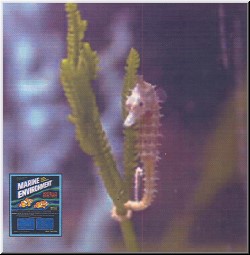This talented young man offers information he has gleaned. This includes step by step information as to the necessary equipment and technique he employs to not only enjoy these exotic pets, but to breed them and raise fry. Text by Chris Noonan. Photos by Steve Allen
The dwarf sea horse reaches a maximum size of 2 inches. They should be kept in peaceful aquariums 20 gallons or smaller. Dwarf sea horse is fry size 1/8″. It is possible to keep as many as 2 dozen in a 2 gallon, 75 dwarfs in a 10 gallon, and up to 200 in a 20 gallon! This would be the absolute maximum. Tanks with this much bio-mass must employ efficient filter systems. Large amounts of beneficial algae should be cultivated. Algae feeds on fish waste and increases essential dissolved oxygen. The experienced sea horse keeper can keep large numbers with the proper knowledge and equipment. As dwarf sea horses grow the population in each aquarium should be reduced by moving some to other small established aquariums.
Hitching Post: The most essential items to provide are hitching post type decorations inside the aquarium. A hitching post is a sea horse tree, plastic plant, live plant, manzanita branch or even a coral branch that the sea horse could grab it’s tail onto. They do this in the wild so ocean currents will not toss them around. Even if there is little to no water movement in your aquarium, the sea horse will instinctively attach itself to a hitching post. They do this to relax, take a break from swimming and have a secure place in which to lean out and snag a piece of food that might be moving by. The hitching post is essential.
Close-pin the cut soda bottle to the inside of a tank that is heated. The tank can be either fresh or salt water. We are using this tank to heat the salt water and brine shrimp eggs we will put in the bottle. Put one end of the air line tubing so it discharges at the bottom of the bottle. Connect the other end to the air pump and plug it in. Add salt water and brine shrimp eggs to the bottle. In about 18-24 hours, the bottle will have baby brine shrimp. Shut the pump off and allow the water to settle. In 10 minutes shine the beam from a flashlight to the bottom of the bottle where the air-line hose is. Take the end that was connected to the air pump and siphon the brine shrimp out into a separate jar. When you are ready, shut off the filter in your sea horse tank and slowly add baby brine into the horse tank. Keep the filter off for about 1 hour so the baby brine will not be to into the filter. If you are planning to be away for a weekend, just sprinkle some brine shrimp eggs in the sea horse tank so they could eat for most of the day. If you are planning doing this for a while and you will be away, you should get a timer for the filter so the filter shuts off around 11 AM. Then have it turn back on at 4 PM. The sea horses should have small amounts of food in the tank for most of the day. It is not good to dump a days worth of food into the tank all at one time. Add small amounts during the day.Be careful not to allow uneaten food or excessive waste accumulate in the tank or caught in the filter. Next issue will have part 2 of this article. |



